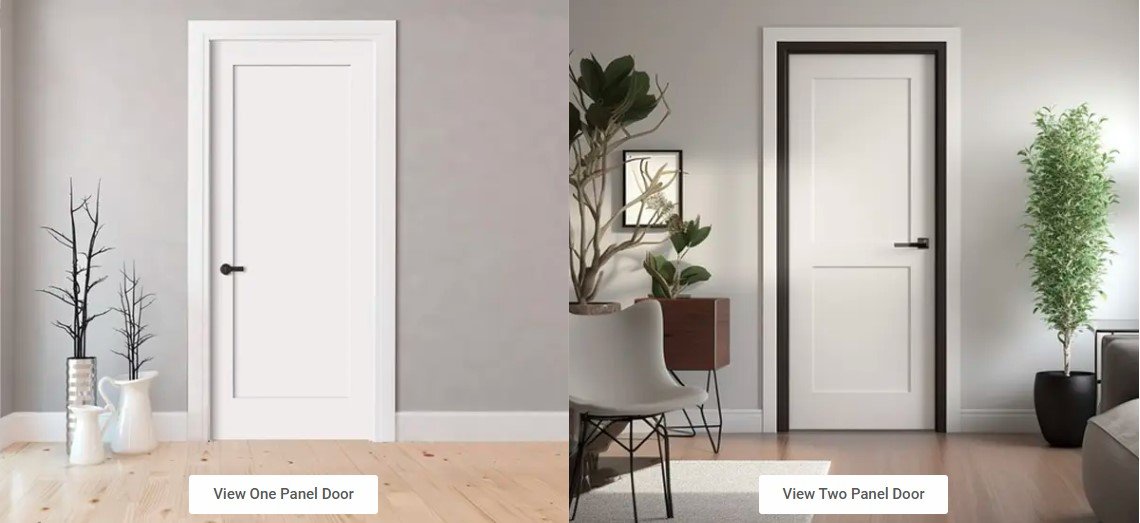
When renovating or building a home, choosing the right interior doors is essential for both aesthetics and functionality. Two popular budget-friendly options are cheap prehung interior doors and hollow core doors. While both are affordable, they have distinct differences in construction, durability, and performance.
In this comprehensive guide, we’ll explore:
-
What prehung interior doors are
-
The pros and cons of hollow core doors
-
Cost comparisons
-
Best uses for each type
-
Installation tips
-
How to choose the right door for your needs
By the end, you’ll know whether a cheap prehung interior door or a hollow core door is the best fit for your project.
What Are Cheap Prehung Interior Doors?
A prehung interior door comes already mounted into a frame with hinges attached, making installation much easier than a slab door (which requires separate framing). These doors are sold as complete units, including:
-
The door slab
-
Hinges
-
Door jamb (the frame)
-
Often a pre-cut strike plate for the latch
Advantages of Prehung Interior Doors
-
Easy Installation – Since the door is pre-assembled in its frame, you only need to fit it into the rough opening and secure it.
-
Better Alignment – The hinges are already correctly positioned, reducing the risk of misalignment.
-
Time-Saving – Ideal for DIYers who want a hassle-free installation.
-
Better Insulation & Soundproofing – Many prehung doors come with weatherstripping, improving energy efficiency.
Disadvantages of Prehung Interior Doors
-
Higher Cost – More expensive than buying a slab door alone.
-
Heavier & Bulkier – Harder to transport and maneuver.
-
Limited Customization – Fewer design options compared to slab doors.
Best Uses for Prehung Doors
-
New construction homes
-
Full room renovations
-
When replacing an old door and frame
What Are Hollow Core Doors?
A hollow core door is a lightweight interior door made with a thin veneer (often wood or MDF) over a honeycomb cardboard or foam core. They are the most affordable type of interior door.
Advantages of Hollow Core Doors
-
Budget-Friendly – Significantly cheaper than solid wood or solid core doors.
-
Lightweight – Easy to handle and install.
-
Good for Basic Use – Suitable for closets, pantries, and low-traffic areas.
Disadvantages of Hollow Core Doors
-
Poor Durability – Prone to dents, scratches, and damage.
-
Weak Soundproofing – The hollow interior allows sound to pass through easily.
-
Not Secure – Easily broken, making them a poor choice for bedrooms or bathrooms where privacy is needed.
Best Uses for Hollow Core Doors
-
Closets
-
Laundry rooms
-
Pantries
-
Temporary or rental properties
Cost Comparison: Cheap Prehung Doors vs. Hollow Core Doors
| Feature | Prehung Interior Door | Hollow Core Door |
|---|---|---|
| Average Cost | $100 – $300+ | $30 – $100 |
| Installation | Easier (pre-assembled) | Harder (requires separate frame) |
| Durability | Moderate to High | Low |
| Soundproofing | Better | Poor |
| Weight | Heavier | Very Light |
Which Is More Cost-Effective?
-
If you need a quick, easy installation, a prehung door may save labor costs.
-
If you’re on a tight budget and don’t need durability, a hollow core door is the cheapest option.
Installation Tips for Cheap Prehung and Hollow Core Doors
Installing a Prehung Interior Door
-
Measure the Rough Opening – Ensure the prehung door fits.
-
Check for Level & Plumb – Use shims to adjust the frame.
-
Secure the Frame – Nail or screw into place.
-
Test the Swing – Make sure the door opens and closes smoothly.
Installing a Hollow Core Slab Door
-
Measure & Cut (If Needed) – Hollow core doors can be trimmed slightly.
-
Install Hinges – Mortise hinges into the door and frame.
-
Hang the Door – Align carefully to prevent sagging.
-
Add Latch & Knob – Drill holes for hardware.
Note: Hollow core doors are harder to install because they require precise hinge placement.
Which Should You Choose?
Choose a Cheap Prehung Interior Door If:
✅ You want easy installation
✅ You need better sound insulation
✅ You’re replacing an old door and frame
✅ You prefer a more durable option
Choose a Hollow Core Door If:
✅ You need the cheapest option
✅ It’s for a low-traffic area (closet, pantry)
✅ You’re renting or need a temporary solution
Final Thoughts
Both cheap prehung interior doors and hollow core doors have their place in home construction and renovation.
-
Prehung doors offer convenience and better quality but at a higher price.
-
Hollow core doors are ultra-affordable but lack durability and privacy.
For most homeowners, a prehung door is the better long-term investment, while hollow core doors work best for non-essential spaces.
Before buying, consider your budget, installation skills, and how much durability you need. With the right choice, you can enhance your home’s functionality without overspending

